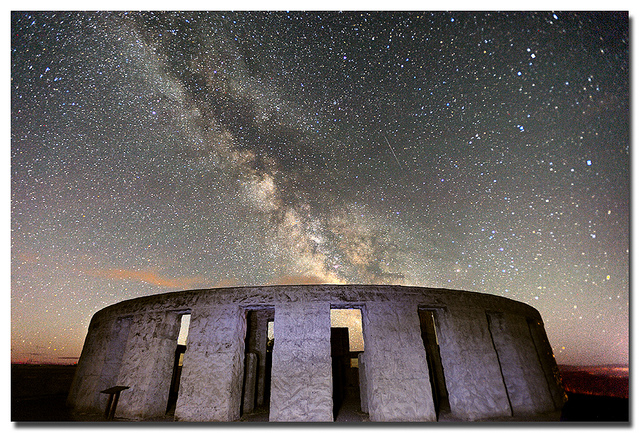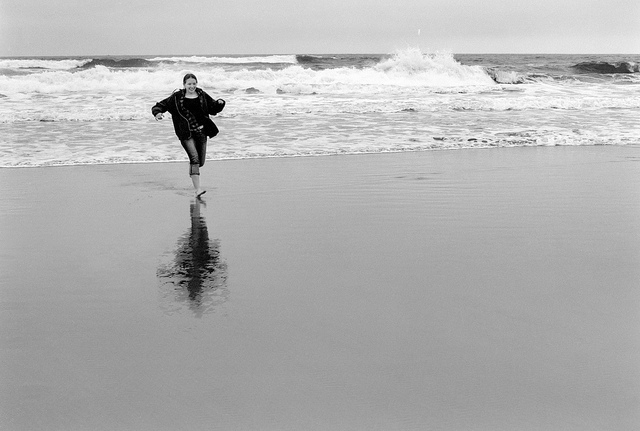Chuck Wendig has written what is, I think, his best post on writing so far, and since he has written quite a few fantastic posts that's saying something. Here's his post (
adult language -->):
Ten Thoughts On Story.
Chuck Wendig's post has ten points, mine only has five and they don't necessarily map onto his points 1-to-1. In any case, there's a lot of great stuff to cover so let's jump in:
1. The three C's of storytelling: Complication, Conflict and Consequence
Here is how Chuck Wendig describes the essence of storytelling:
"[A] character you
like ... wants something ... but can’t have [it] ... and goes on a quest to answer that interrupted desire ..."
I put the ellipses in the above quotation because CW refers back to his account of his son's first story. (It's a touching account, I do hope you read CW's article.)
Here's an example of what this looks like:
a. Desire/goal
Protagonist desires something. This something is/becomes the story goal.
Example: In
Indiana Jones And The Raiders of The Lost Ark Indiana Jones desires the ark.
b. Complication
Something/someone comes into the picture that/who will prevent the protagonist from achieving their desire. Another way of saying this: someone else wants the same thing the protagonist does but only one person can have it.
Example: Rene Belloq, a rival archeologist, also desires the ark.
c. Conflict
The protagonist and antagonist are pitched against each other in a series of conflicts.
Example: Indiana and Rene enter into a contest, a battle of wits/wills, to find the ark and bring it back to their sponsor/patron.
d. Consequence
The consequence of the conflict. Usually there are three possible outcomes:
i. The protagonist achieves his goal/desire.
ii. The antagonist achieves his goal/desire.
iii. No one achieves their goal/desire.
Example: Rene is killed by the thing he wishes to possess, Indiana takes possession of the ark and delivers it to his patron in the US though, as it turns out, the patron is not allowed to keep it.
2. The essence of plot
This is how Chuck Wendig describes plot:
"[T]he actions of many characters hoping to gain what they desire and
avoid what they fear and the complications and conflicts that result
from those actions. A character-driven story rather than one driven by events."
3. Your character's motives, their stories, are the most compelling
Chuck Wendig uses
Star Wars as an example:
"At the end of the day, the big story is subservient to the little one.
The Empire and Rebellion are just set dressing for the core conflict of
Luke, Leia, and their father. Or the loyalty of Han. "
4. Every character has to want something
Chuck Wendig writes:
"Money? Love? Revenge? Approval of estranged father? High score on rip-off arcade game, Donkey Dong? Motivation is king. It moves
the characters through the dangerous world you’ve put before them. It
forces them to act when it’s easier not to. It gives them great agency."
5. The scene: Yes, BUT .../No, AND ...
A story is told in scenes. In that sense, scenes are the atoms of story. (Chuck Wendig touches on this point, but I thought I'd expand on it.)
In each scene characters have desires, often conflicting desires, but there will be one thing in particular--some goal--they're working toward. By the end of the scene that goal has either been achieved or not (probably not). If not, then another goal has likely taken its place.
(
Making A Scene: Using Conflicts And Setbacks To Create Narrative Drive.)
An easy way of remembering this is: Yes, BUT .../ No, AND ...
Yes, the hero achieves his goal, BUT there is a setback. No, the hero does not achieve his goal AND there is a setback. Here are a few examples from
Indiana Jones taken from my article
Making A Scene:
Examples:
Conflict:
Does Indie find the ark?
Setback: Yes, BUT he is captured, thrown into a pit of snakes, and the antagonist takes the ark.
Conflict: Do Indie and Marion survive the pit of snakes?
Setback: Yes, they use torches to keep the snakes at bay BUT the torches are about to burn out.
Conflict: Do Indie and Marion escape the pit of snakes before their torches burn out?
Setback: Yes, Indie crashes a pillar through a wall providing
them a way to escape BUT the room they enter is filled with skeletons
that--for Marion at least--seem to come alive.
(A bit later in the film ...)
Conflict: Will Indie commandeer the plane?
Setback: No, AND Indie is spotted crawling up the plane, toward the pilot.
Conflict: Indie and a bad guy fight. Will Indie win?
Setback: Yes, BUT a much bigger man starts a fight with Indie (AND the pilot sees indie and knows he's trying to commandeer the plane).
Conflict: The pilot starts to take pot shots at Indie. Will Indie escape being hit?
Setback: Yes, Indie dodges the pilot's bullets BUT the pilot keeps shooting.
Conflict: Indie is fighting a huge bad guy. It looks like he
has no chance of winning. Will Indie, against all odds, win the fight
against the Man-Mountain?
Setback: No, Indie is not going to win a fist-fight with the Man-Mountain AND the pilot is still shooting at him.
Scenes are chains of conflicts and setbacks followed, at the end, by some sort of resolution/consequence that (unless it's the end of the story) spawn further conflicts and setbacks.
As I said at the beginning, Chuck Wendig's article (
adult language -->),
Ten Thoughts On Story, is a must-read.
Photo credit: "
Smoking Stonehenge" by
Bala Sivakumar under
Creative Commons Attribution 2.0.










